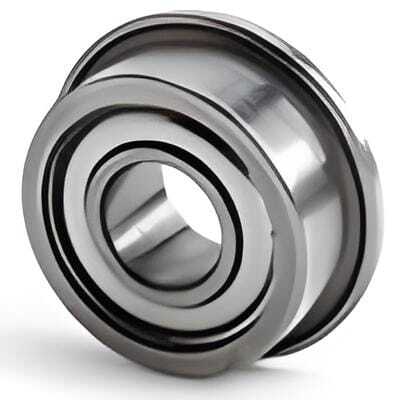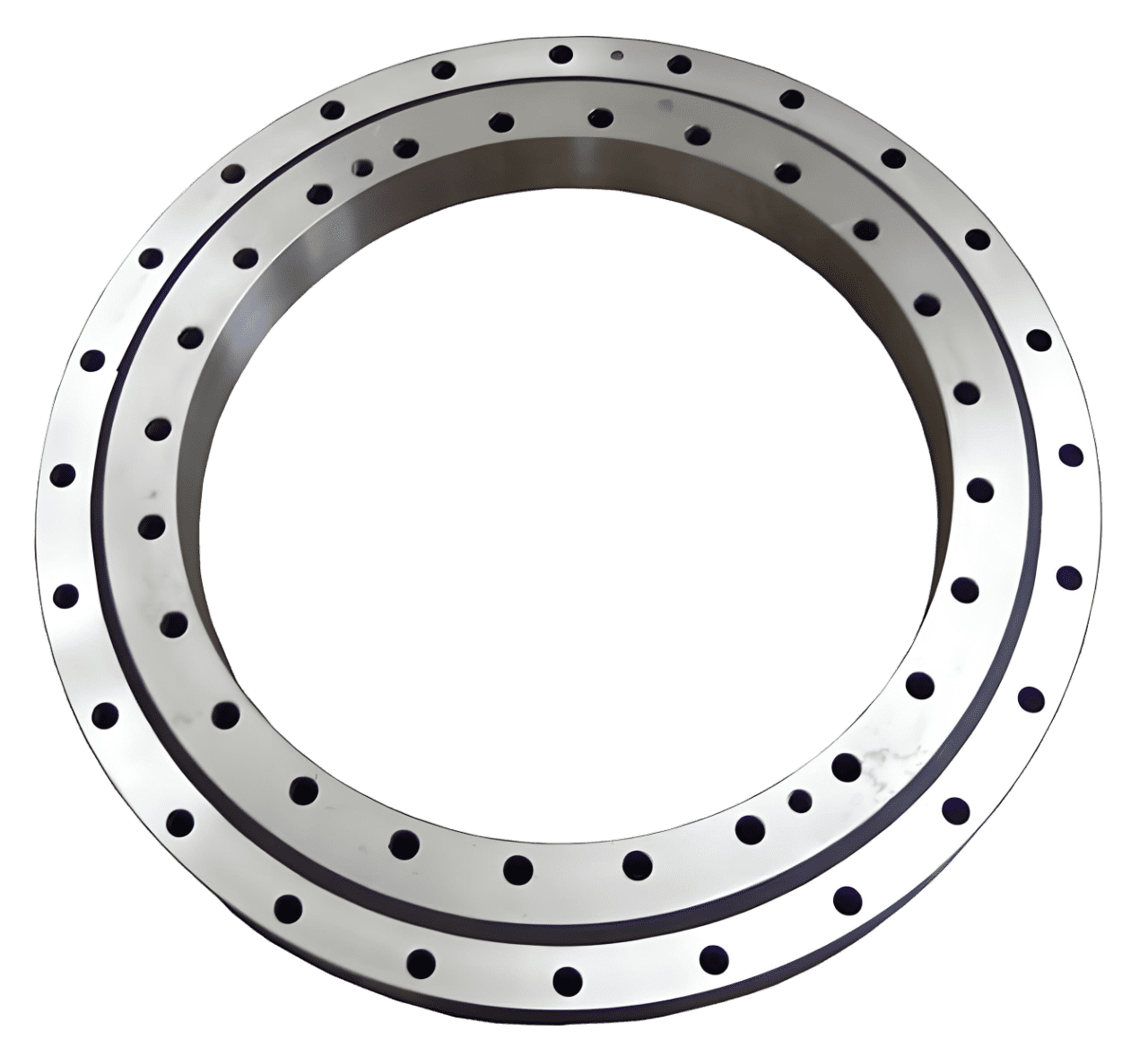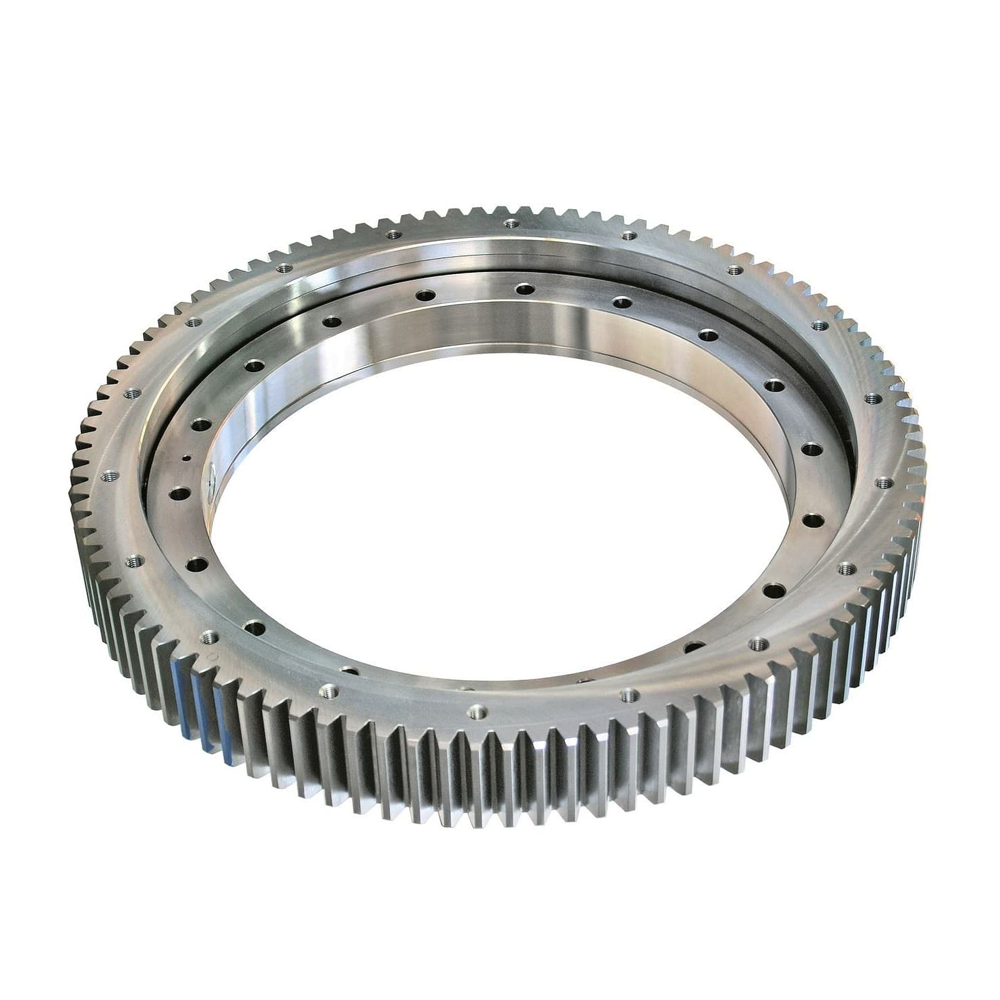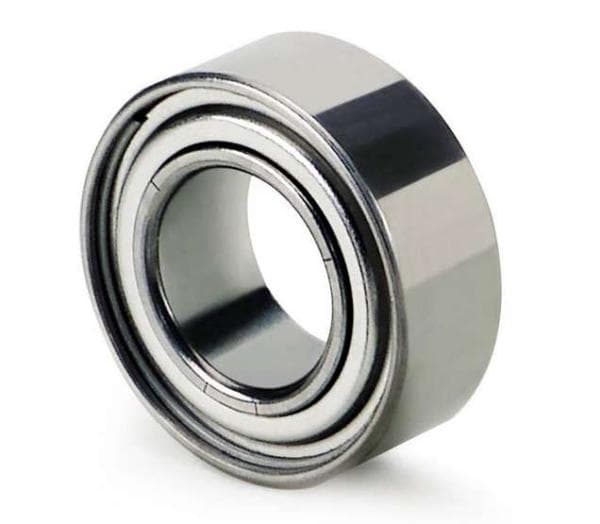Silicon Nitride Balls: Why They're Used in Bearings?
Ball bearings are essential in many industries, such as automotive and aerospace. They reduce friction between moving parts, enhancing the...

Precision bearings are special types of bearings designed to provide high accuracy, performance, and reliability in modern machines. They are built to work in tough conditions with very little friction, allowing parts to move smoothly and precisely.
The main job of precision bearings is to reduce friction between moving parts, helping machines run smoothly and accurately. These bearings are important for machines that need high performance, speed, and durability. They reduce wear and save energy, making machines work better and last longer.
This blog will explore the features, types, uses, and benefits of super precision bearings.
Tight manufacturing tolerances, defined by ABEC or ISO standards, are important for making sure precision ball bearings work well. These tolerances set strict limits on how parts are made, ensuring they fit together perfectly.
With tighter tolerances, bearings run more smoothly, reduce friction, and last longer. Bearings with loose tolerances may wear out faster and waste more energy.
Precision bearings are designed to handle high speeds, making them ideal for machines that need to run quickly and smoothly. Their ability to reduce friction helps them operate efficiently at high speeds. This prevents them from overheating or wearing down too quickly.
Precision bearings are vital in high-demand areas like aerospace, medical devices, and manufacturing. They can handle heavy loads, remain accurate, and work reliably in challenging conditions. This makes them important in industries where speed, accuracy, and durability are key to success.
Precision bearings are built with strong structures that help them handle heavy loads while lasting a long time. This strength comes from the careful design of their parts, including the inner and outer rings and the rolling elements. The cage holds the rolling elements in place, contributing to the overall durability of the bearing.
Precision bearings handle extreme loads while maintaining longevity through their strong design and high-quality materials. They distribute loads evenly across the rolling elements.
This helps prevent stress on any single point. This design minimizes wear and tear. It allows the bearings to withstand heavy pressures without deformation.
| Component | Description | Function |
| Inner Ring | The inner component that attaches to the shaft. | Provides a surface for the rolling elements to rotate against. |
| Outer Ring | The outer part that fits into the housing. | Serves as a stable surface for the rolling elements and supports load distribution. |
| Rolling Elements | Balls or rollers that enable smooth movement. | Facilitate rotation and reduce friction between the inner and outer rings. |
| Cage | The structure that holds the rolling elements in place and maintains spacing. | Keeps rolling elements evenly spaced and prevents them from colliding. |
| Load Distribution | Arrows representing how loads are distributed across the rolling elements. | Illustrates how even load distribution prevents stress on any single point. |
| Contact Points | Areas where the rolling elements touch the inner and outer rings. | Highlight how loads are supported, aiding in longevity and performance. |
Every part of a precision bearing helps to ensure preciion and good performance.
Properties: High-carbon steel is known for its hardness and ability to withstand heavy loads. It undergoes heat treatment to improve strength and wear resistance.
Effect on Performance: This material is durable and works well in high-speed applications. However, high-carbon steel can rust easily, which may shorten its lifespan if it isn’t well maintained or lubricated.
Properties: Stainless steel contains chromium, which makes it resistant to rust and corrosion. It is often used in environments where moisture or chemicals are present.
Effect on Performance: Stainless steel bearings maintain strength and performance in harsh conditions. They offer a good balance between strength and corrosion resistance. However, they might be a bit softer than high-carbon steel, which can reduce their wear resistance in some uses.
Properties: Ceramic materials, like silicon nitride, are lightweight, resist corrosion, and can withstand high temperatures.
Effect on Performance: Ceramic bearings can operate at higher speeds and produce less heat than metal bearings. They also have excellent wear resistance. However, they can be more brittle and may not perform as well under sudden shock loads. This limits their use in some high-impact applications.
Ceramic bearings are used in the aerospace and automotive industries to withstand high temperatures and provide good electrical insulation. This helps improve the efficiency and reliability of motors and reduces the risk of electrical issues.
Key benefits of ceramic bearings are low noise, reduced vibration, and high-temperature resistance. These features make them perfect for applications where smooth operation and reliability are important. Examples include electric motors and high-speed machinery.
| Feature | Stainless Steel Bearings | Ceramic Bearings |
| Weight | Heavier than ceramic | Lightweight |
| Corrosion Resistance | Good, but can rust without proper maintenance | Excellent; highly resistant to corrosion |
| Temperature Resistance | Moderate; can handle some heat but has limits | High; can withstand extreme temperatures |
| Friction | Higher friction than ceramics | Lower friction, leading to smoother operation |
| Durability | Durable but can wear down over time | Highly durable and resistant to wear |
| Electrical Insulation | Conductive; not suitable for electrical insulation | Non-conductive; provides good electrical insulation |
| Cost | Generally lower cost | Typically higher cost because materials and processing |
| Applications | Common in general use, such as automotive parts | Ideal for high-performance applications like aerospace and motors |
Deep groove radial bearings are one of the most common types of rolling bearings. They consist of an inner ring, an outer ring, and a series of rolling elements (usually balls) that sit in a deep raceway. This design allows the bearing to support both radial and axial loads effectively.
Deep groove radial bearings primarily support radial loads, which are sideways forces on the shaft. Their deep raceway increases contact area, allowing them to handle these forces smoothly. They can also handle forces along the shaft (axial loads), but not as well as special axial bearings.
Deep groove radial bearings are often used in electric motors in industrial settings. They are perfect for high-speed electric motors, helping them run efficiently and last longer in tough conditions.
In machine tools, these bearings support fast-moving parts. This helps ensure precise positioning and reduces vibration. Their design allows them to handle axial loads from multiple directions. This is essential during operations like drilling and milling, where forces can come from different angles.
The CNC machine operated more smoothly and vibrated less. This improved cutting accuracy and reduced tool wear. This improvement increased overall productivity and extended the equipment's lifespan.
By allowing faster cycle times and reducing downtime, angular contact ball bearings greatly boosted the efficiency of CNC machines. This resulted in higher-quality finished products.
In automotive transmissions, thrust bearings are important for handling forces during gear shifts. They also help manage forces while the vehicle is moving. They help maintain the alignment of the shafts and prevent excessive movement. This ensures smooth and efficient operation.
By supporting axial loads, thrust precision bearings improve the performance and reliability of the transmission system. They allow for smooth gear changes and increase the durability of the components.
Miniature precision bearings are widely used in small, compact devices such as medical equipment and hand tools. Their small size allows them to fit into tight spaces while providing high accuracy and smooth operation.
In aerospace applications, precision bearings are used in important parts like turbines, gearboxes, and landing gear systems.
They can handle both axial and radial loads with high accuracy. This is important for precise control and stability of aircraft during flight. Aerospace bearings are often made from special materials like ceramic or stainless steel. These materials provide durability, resist corrosion, and can handle high temperatures.
In high-speed aircraft turbines, precision bearings are crucial. They allow the turbine blades to spin smoothly at high speeds while handling the heat generation and heavy loads of flight. These bearings reduce friction, improve fuel efficiency, and help the engine last longer. This makes them vital for the safety and performance of the aircraft.
Precision bearings are crucial in surgical tools and MRI machines because they provide smooth and reliable movement. In surgical tools, these bearings enable accurate and controlled movements. This is important for minimally invasive procedures that require super precision.
In robotic surgical devices, precision bearings are crucial for improving accuracy and control during operations. For instance, in the da Vinci Surgical System, these bearings are built into the robotic arms. The arms hold and move surgical instruments for minimally invasive surgeries.
In racing car engines, precision bearings reduce friction between moving parts. This allows the engine to operate more smoothly and efficiently.This not only increases power output but also helps prevent overheating.
Preventing overheating is vital during high-speed racing conditions. Similarly, in transmissions, precision bearings help support smooth gear changes. They also reduce wear, ensuring that the vehicle performs optimally.
In the semiconductor industry, precision bearings are essential for high-precision tasks. They are involved in the manufacturing of microchips and electronic components. They are used in wafer handling systems to enable smooth and accurate movement of delicate silicon wafers. This helps prevent damage during various processes.
Precision bearings minimize friction by providing smooth surfaces for parts to move against each other. Their design includes polished surfaces and high-quality rolling elements, such as balls or rollers. This design reduces contact between moving parts.
Less friction leads to several benefits. It generates less heat, which can wear out equipment over time. With reduced heat, parts don't expand as much, preventing damage. Lower friction also means that machines need less energy to operate, making them more efficient.
Precision bearings are designed to support both axial and radial loads, even in extreme conditions. This Multipurpose makes them reliable in tough environments, like high-speed machinery or heavy industrial applications. They can keep performing well without losing effectiveness.
In high-speed environments, such as turbines or high-performance engines, low vibration is important. It helps prevent wear and tear on components. This extends the lifespan of the machinery.
Additionally, smooth-running precision bearings enable faster operation without compromising stability. This is essential for maintaining precision in tasks that require exact movements.
Reduced wear and tear on machinery lead to less frequent maintenance and downtime. When components last longer and operate smoothly, there is less need for repairs or replacements.
This allows equipment to run efficiently and constantly. This not only saves time but also lowers operating costs. As a result, it contributes to overall productivity.
In an industrial manufacturing plant, a company used precision bearings in their conveyor systems. Before switching to precision bearings, they faced frequent breakdowns. Costly maintenance was required due to excessive wear on the traditional bearings. After the upgrade, the new precision bearings significantly reduced friction and vibration in the system.
Application-Specific Example:
ABEC and ISO ratings are important for choosing the right precision bearings. These ratings show how precise the bearings are, with ABEC ratings ranging from 1 to 9—higher numbers mean better precision. They also provide a standard for quality, making it easier to compare different bearings and ensure they are reliable.
| Rating System | Rating | Precision Level | Typical Applications |
| ABEC | 1 | Low | General applications |
| 3 | Medium | Light-duty machinery | |
| 5 | High | Moderate-speed applications | |
| 7 | Very High | High-speed machinery | |
| 9 | Ultra High | Aerospace, robotics, and precision tools | |
| ISO | P0 | Low | General applications |
| P6 | Medium | Light-duty machinery | |
| P5 | High | Moderate-speed applications | |
| P4 | Very High | High-speed machinery | |
| P2 | Ultra High | Aerospace, robotics, and precision tools |
When selecting precision bearings, it's a good idea to consult manufacturers for custom solutions. They can provide expert advice on materials and designs tailored to your specific needs. This includes considering factors like load requirements and operating conditions. Custom options can include special coatings, unique sizes, or bearings designed for tough environments.
In the aerospace industry, precision bearings greatly improve the efficiency and reliability of jet engines. Manufacturers use advanced materials like ceramic and stainless steel to make these bearings. These materials provide high tolerance levels and low friction.
This design allows for smoother operation and better heat management. As a result, aircraft can achieve increased fuel efficiency, enabling them to travel longer distances on less fuel. Additionally, these bearings enhance reliability by reducing the risk of failures and minimizing maintenance interruptions.
Precision angular contact bearings are crucial for CNC machining, greatly improving accuracy and performance. They can handle both radial and axial loads, which helps maintain stability and rigidity during high-speed operations.
By reducing vibrations and allowing for tighter tolerances, these bearings improve the quality of finished products. They also increase the lifespan of CNC machines. Using these bearings results in better machining accuracy, less maintenance, and overall improved efficiency in manufacturing.
Super-precision bearings are crucial for boosting the performance of motorsports engines. They are designed for high-speed and heavy-load situations. By reducing friction and improving efficiency, these bearings help engines run more smoothly. By minimizing wear and tear, these bearings allow for better power output and help prevent overheating during intense races.
Using super-precision bearings increases reliability and durability. This improvement leads to faster lap times and better overall performance in competitive motorsports.
Precision bearings are vital across various industries, enhancing performance and reliability.
In aerospace, they improve fuel efficiency and reduce maintenance in jet engines. In automotive applications, they boost engine performance in motorsports. For CNC machining, they enhance accuracy and reduce vibrations. In medical devices, they ensure smooth movements.
Choosing the right bearing is crucial for meeting the specific needs of each application. By selecting bearings tailored to important factors like load, speed, and environment, you can enhance performance and reliability. This careful choice also helps minimize maintenance costs.
We encourage you to consult bearing specialists or manufacturers to identify the best precision bearings for your specific needs. Their expertise can help ensure optimal performance and reliability in your applications.

Ball bearings are essential in many industries, such as automotive and aerospace. They reduce friction between moving parts, enhancing the...

This guide explores pioneering global manufacturers of slewing bearing with a strong presence in the USA”. These components are engineering marvels,...

High temperature bearings are made to work in hot conditions where regular bearings would fail. They are built with special materials and coatings...